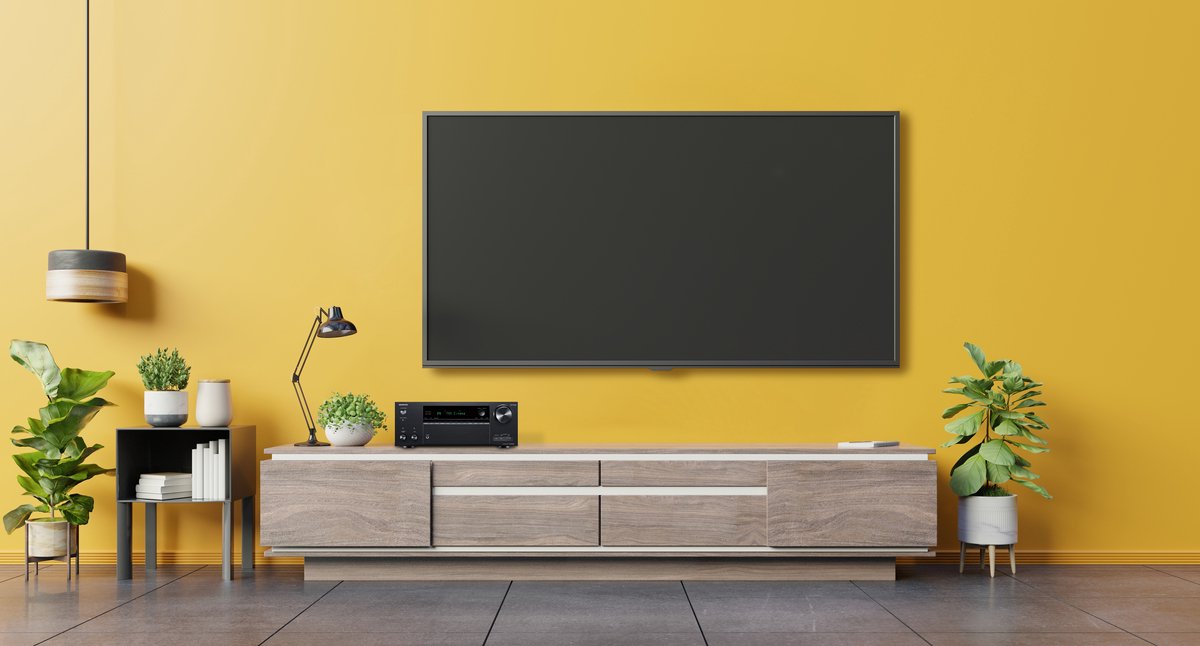
Getting your Onkyo 5.1 home theater system to sound just right is easier than it seems. You just need the right setup. This guide walks you through speaker placement, receiver settings, and calibration without overcomplicating anything. Whether you’re building your first system or improving what you already have, this will help you get the best possible sound.
Start with your room, not the speakers
Before setting up anything, look at your room. Think about where you sit, where the walls are and how sound might bounce. Large furniture can absorb sound. Bare walls might reflect it too much. A room with soft furnishings like rugs and curtains can help balance the sound naturally. Try not to place your system in a corner. The goal is to create a space where sound moves freely around you.
Find the right spot for each speaker.
A 5.1 system has six parts. You get five speakers along with one subwoofer. Every piece has a role. Every placement matters.
- Front left and right speakers go at ear level. Put them on either side of your screen. Keep a little distance between them and tilt them slightly toward your seat.
- The center speaker handles voices. It should go right below or above your TV. Line it up with the screen as much as possible.
- Surround speakers go beside or just behind your main seat. Keep them at or just above ear level. Angle them slightly to wrap sound around you.
- The subwoofer can go in more than one spot. Corners might make it sound too boomy. Try placing it near the front speakers but away from a wall. Move it a little and listen. A small change in position can make a big difference.
Now turn to the receiver.
Your Onkyo AV receiver controls the whole setup. It sends the correct sound to all speakers and levels the system. Start by connecting the speakers to the right ports on the backside of the receiver. Each port is marked. Match the wires carefully. Connect the subwoofer to the LFE (Low-Frequency Effects) output.
Once everything is connected, switch on the receiver and open the setup menu. Use your TV screen to follow the prompts. Onkyo receivers come with built-in guides that walk you through speaker configuration. Pick the 5.1 option when asked.
Use the auto-calibration feature.
Most Onkyo systems come with a microphone and auto-calibration tool. Place the mic where you normally sit. The system will send test tones to each speaker and adjust them based on what the mic hears. This step fine-tunes the levels for your room and furniture. Do it at least twice. Try moving the mic a little and running it again. Pick the version that sounds better to you.
If you want to adjust things further, use the manual settings. You can increase or reduce the volume for each speaker. You can also set distance and crossover points. The crossover setting tells the receiver when to send bass to the subwoofer instead of the other speakers. A good starting point is 80Hz. You can change it later based on what you hear.
Don’t forget the small details.
After setup, spend a few minutes listening. Play a movie you know well. Use different types of content. Action scenes, quiet conversations, music, and background sound should all feel balanced. If the voices sound too low, raise the center speaker level. If the bass is too heavy, move the subwoofer or turn it down slightly.
Keep cables neat. Use wire clips or covers. Avoid running speaker wires under rugs where they can get damaged.
Give your ears time to adjust to the sound. What feels too sharp or too soft at first might sound perfect after a few days.
Check your source devices.
Your sound is only as good as your source. Make sure your Blu-ray player or streaming box sends audio in surround mode. Look for Dolby Digital or DTS settings and enable them. Set your receiver to decode these signals automatically. If your audio only comes from the front speakers, the source might be sending stereo instead of surround.
Use HDMI when possible. HDMI carries both audio and video. It also supports higher-quality sound formats. Connect all devices to the receiver, not to the TV directly. This way the receiver controls everything and passes video to the TV.
Revisit settings once in a while
Your room changes over time. You move furniture. You add new decor. Run the auto-calibration again when that happens. You might be surprised how much the sound improves just by redoing this step every few months.
Listen to how each speaker performs. If one seems weak, check the wire connection. Over time, even good cables can loosen. Keep your receiver’s firmware up to date. Most Onkyo receivers let you check updates through the menu itself.
Common mistakes to avoid
- Putting all speakers at the same height
- Placing the subwoofer inside a cabinet
- Ignoring room acoustics like floor type or wall texture
- Turning up the bass or treble too high to fix bad placement
- Using long, thin wires that drop the signal strength
Wrap-up
Getting the best sound from your Onkyo 5.1 system is about more than just plugging it in. A little care in setup goes a long way. You can always adjust later. What matters most is how it sounds to you in your room.
Cinebels.com provides the answer to professional advice, product recommendations, and full home theater solutions. They bring over 60 years of audio experience into your living room. Their employees will be able to help you plan, install, and calibrate your Onkyo system so that you can enjoy every scene in the way it was meant to be heard.
FAQs
How do I know if my Onkyo 5.1 system is set up correctly?
Start by playing a movie or a concert you know well. Listen to how the sound moves. Dialogue should feel centered. Effects should come from the sides. Bass should feel deep but not overwhelming. If anything sounds off, check speaker placement and levels.
Where should I place the subwoofer for the best bass?
Try placing it near the front speakers, but not too close to a wall. Avoid putting it in a cabinet. You might need to test a few spots. Play a scene with deep bass and move the subwoofer a little each time. Trust what you hear.
Do I need to use the auto-calibration tool every time I move something?
Yes. If you move a speaker, change furniture or add new decor, run the auto-calibration again. Sound changes with the room. This tool helps keep everything balanced.
Can I connect other devices like game consoles or streaming sticks?
Yes. Use HDMI cables and connect them to the receiver instead of the TV. This way, your Onkyo system handles the sound directly. It also keeps switching between devices simple.
What if the voices in movies sound too quiet?
Raise the center speaker level in your receiver settings. This speaker handles most of the dialogue. A small increase makes a big difference without affecting other sounds.
